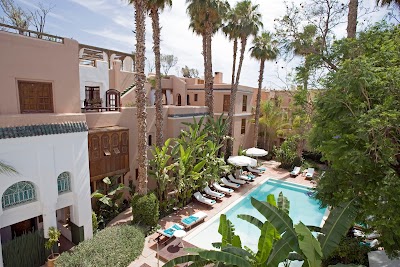Essaouira Port (ميناء الصويرة)
Overview
Port de Essaouira, a remarkable historical landmark nestled in the coastal city of Essaouira, Morocco, boasts a rich legacy that dates back to the 18th century. Commissioned by Sultan Sidi Mohammed ben Abdallah in 1765, this ambitious project aimed to transform Essaouira into a vital trading post along the Atlantic coast, ushering in a new era of commerce and connectivity.
Architectural Design and Fortifications
The port was carefully crafted by European architects and engineers under the Sultan's guidance, resulting in a fortified harbor designed for efficiency and protection. Influenced by contemporary maritime architecture, Port de Essaouira features impressive fortifications, including towering walls, bastions, and strategically placed cannons designed to fend off pirates and hostile fleets. This robust design reflects the period's construction techniques and the collaborative efforts of local laborers and artisans who worked diligently to realize the Sultan's vision.
Scala del Mar and Strategic Vantage Points
Among the port's initial developments was the Scala del Mar, a fortified sea bastion serving as both a lookout and a defense point. Characterized by its thick walls and ramparts, this bastion offers breathtaking panoramic views of the Atlantic Ocean and serves as a crucial vantage point for monitoring incoming vessels. Its strategic placement underscores the port's role in maritime defense and trade.
Trade and Commerce Hub
Beyond its defensive features, Port de Essaouira was expertly designed to support trade and commerce. The construction of warehouses, docks, and shipyards facilitated a thriving maritime economy. Positioned along major trade routes, the port became a bustling hub where goods were exchanged between Africa, Europe, and the Americas. This vibrant exchange attracted traders and merchants from diverse backgrounds, enriching Essaouira's multicultural atmosphere.
Bab el-Marsa: The Port Gate
One of the port's most iconic attractions is the Bab el-Marsa, also known as the "Port Gate." This grand entrance, adorned with intricate carvings and inscriptions, stands as a testament to the port's historical significance and architectural beauty. Serving as the main entry point for goods and travelers arriving by sea, the Bab el-Marsa encapsulates the port's welcoming spirit.
Modern-Day Appeal
Over the centuries, Port de Essaouira has evolved, undergoing several modifications and expansions to meet the growing demands of trade and travel. Yet, despite these changes, its original charm and historical essence remain intact. Today, the port is an active fishing harbor, where traditional blue boats bob gently in the water, enhancing its picturesque setting.
A Taste of Local Life
Visitors to Port de Essaouira are treated to a vivid glimpse into Morocco's maritime history. The bustling fish market, where local fishermen sell their daily catch, provides an authentic experience of the region's way of life. Along the port area, numerous cafes and restaurants invite guests to savor the culinary delights of Essaouira, showcasing the rich flavors of the local cuisine.
Cultural Significance
In recent years, Port de Essaouira has emerged as a vibrant cultural and artistic destination. The annual Gnaoua World Music Festival attracts musicians from around the globe, infusing contemporary cultural vibrancy into the port area. This fusion of historical significance and modern artistic expression makes Port de Essaouira a unique and enchanting place to explore.
As you wander through Port de Essaouira, the echoes of its storied past resonate within its walls and ramparts. The harmonious blend of architectural elegance and practical functionality serves as a testament to the ingenuity and vision of its creators. Today, the port stands not only as a monument to Morocco's maritime heritage but also as a lively and dynamic piece of history, continuing to play a vital role in the life of Essaouira.









